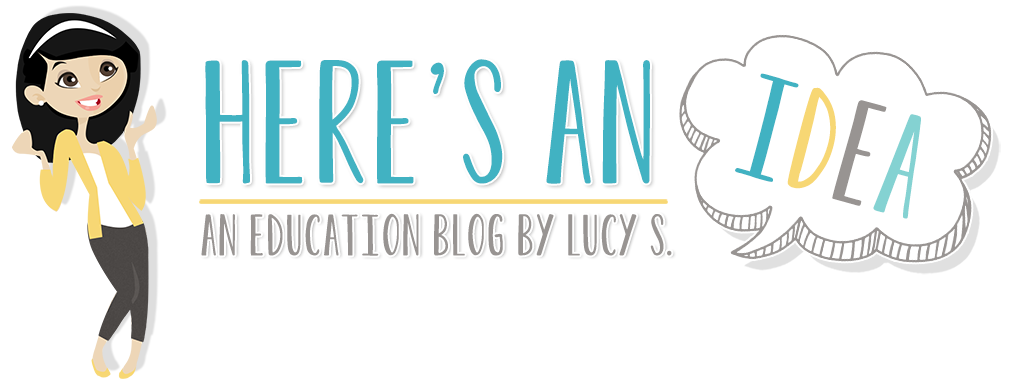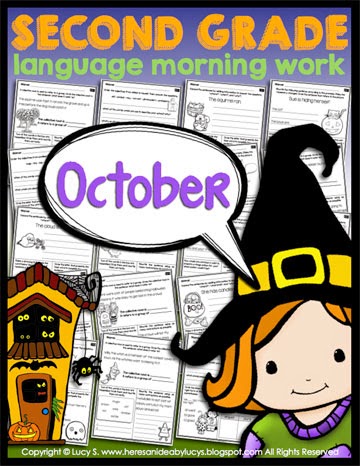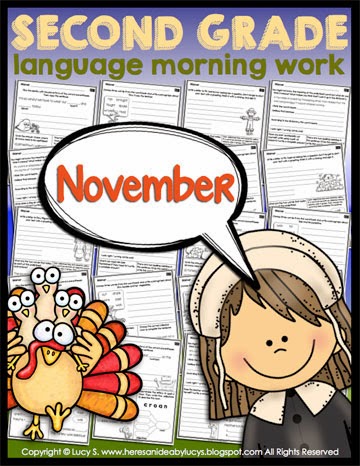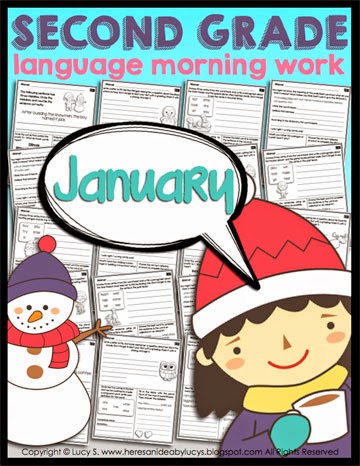I'm sure you've been there before. I know I have.
The alarm clock doesn't go off, you're late and don't have time for breakfast, and the car won't start.
The rest of the day is, well, a mess to put it mildly.
When you start the day off on the wrong foot, the rest of it can't be any better.
You know what I'm talking about, right?
It is definitely harder to have a productive and focused teaching day after a rough morning start.
The same is true for your students.
You certainly cannot control what happens to them in their homes as they're getting ready to go to school, BUT you can do something about how they start their school day.
As soon as kids arrive in the morning, you want to get them on the right track immediately. Or better yet, you MUST get them on the right track, or you run the risk of having unfocused students throughout the rest of the day.
You want them to start the day off on the right foot.
Establish a routine that's easy to implement and that engages their little brains from the moment they step inside the classroom.
That's where morning work comes in!
Make copies, have them within reach, and teach kids to grab a sheet as soon as they arrive and are ready to start the day.
"Ok, Lucy, that's great, but what do I do next? Kids arrive at different times and work at different paces. They won't finish the worksheets at the same time."
When the first ones are done with their work, you can have them help others who might be having difficulty completing the exercises. That also serves to encourage stronger bonding among your students.
You can also allot a certain amount of time and tell everyone to stop once the time is up. The unfinished worksheets can be assigned as homework on the same day or at the end of the week.
Would you like to try out a sample?
Then, click to download ten FREE Language Morning Work worksheets or click on the image below.
I've also bundled the sets and I'm offering you two choices: either buy the bundle, which is 30% off, or buy seven individual sets and email me so I can send you the other three for FREE.
I'm offering the second option because there are teachers who have been getting the sets as I release them. I wanted those teachers to have the same benefit as those who will be buying the bundle now.
Click on any of the images to be re-directed to my TpT store.
If you have any questions, feel free to email me.
Thank you for reading!
Noun or Verb Anchor Chart and a freebie!
It might come naturally to an adult native speaker of English that some words act as both verbs and nouns. Of course, the context will tell you the difference. That's easy for you to see.
Now, think about a young child and/or an ELL student. They might have trouble understanding that a word like "play" can be a noun ("I watched a wonderful play"), but also a verb ("Let's play outside").
Helping them navigate the world of multiple meaning words and parts of speech is not an easy task, but it's a crucial one in getting them to succeed in a world where people are constantly turning nouns into verbs ("Friend me on FB"), and verbs into nouns ("I've only got one like on IG").
If you're introducing nouns and verbs to your students or if you're reviewing those two parts of speech, here's an idea that will get your kids to think about the multiple meaning of words on a daily or weekly basis.
Use an interactive "Noun or Verb" anchor chart like the one below.
Read on to learn how you can use it in your classroom.
1. Once a day (or a week), write a word on a post-it and attach it to the top bubble.
2. Have students write sentences (on two pieces of post-its) in which the focus word acts as a noun and a verb.
3. Gather all the post-its and "shuffle" them.
4. Pick one post-it and read the sentence on it, and have students tell you if the word is a noun or a verb.
5. Attach the post-it on the verb bubble or the noun bubble of the anchor chart.
6. Go through as many sentences as time allows. If you change the focus word once a week, you'll probably be able to go through all the sentences. For example, if you have 20 students, go through 4 sentences a day.
If your students are struggling with the concept, you might have them come up with sentences in pairs or small groups.
You might also brainstorm the sentences together as a class when first introducing the activity, and later move on to the procedure described above.
Sometimes it's hard to remember words that can act as both verbs and nouns, so feel free to use some of the words you'll find in my FREE Noun or Verb No-Prep Printable Worksheets. You can use the printables as pre or post-assessment as well.
And if you happen to be looking for more fun ways to practice nouns and verbs, be sure to check out my Noun or Verb Scoot - 2 sets of 35 Task Cards.
And I'm linking up with the grammar queen Deb Hanson for her Anchors Away Linky Party.
Be sure to check out her anchor charts. They're incredible!
Thanks for reading!
Now, think about a young child and/or an ELL student. They might have trouble understanding that a word like "play" can be a noun ("I watched a wonderful play"), but also a verb ("Let's play outside").
Helping them navigate the world of multiple meaning words and parts of speech is not an easy task, but it's a crucial one in getting them to succeed in a world where people are constantly turning nouns into verbs ("Friend me on FB"), and verbs into nouns ("I've only got one like on IG").
If you're introducing nouns and verbs to your students or if you're reviewing those two parts of speech, here's an idea that will get your kids to think about the multiple meaning of words on a daily or weekly basis.
Use an interactive "Noun or Verb" anchor chart like the one below.
Read on to learn how you can use it in your classroom.
 |
| Is it a noun or a verb? It can be both! Use this interactive anchor chart to get your students working with the two most important parts of speech: nouns and verbs |
1. Once a day (or a week), write a word on a post-it and attach it to the top bubble.
2. Have students write sentences (on two pieces of post-its) in which the focus word acts as a noun and a verb.
3. Gather all the post-its and "shuffle" them.
4. Pick one post-it and read the sentence on it, and have students tell you if the word is a noun or a verb.
5. Attach the post-it on the verb bubble or the noun bubble of the anchor chart.
6. Go through as many sentences as time allows. If you change the focus word once a week, you'll probably be able to go through all the sentences. For example, if you have 20 students, go through 4 sentences a day.
If your students are struggling with the concept, you might have them come up with sentences in pairs or small groups.
You might also brainstorm the sentences together as a class when first introducing the activity, and later move on to the procedure described above.
Sometimes it's hard to remember words that can act as both verbs and nouns, so feel free to use some of the words you'll find in my FREE Noun or Verb No-Prep Printable Worksheets. You can use the printables as pre or post-assessment as well.
 |
And I'm linking up with the grammar queen Deb Hanson for her Anchors Away Linky Party.
Be sure to check out her anchor charts. They're incredible!
Thanks for reading!
Subscribe to:
Posts (Atom)

















